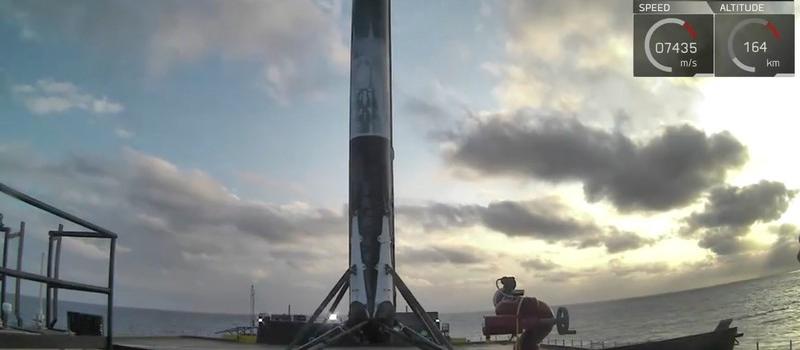How SpaceX’s Recycled Rocket Launch Reflects the Growing Disruptive Technology of Space Exploration
posted by Banning Garrett on April 3, 2017 - 10:30am

The aerospace industry is breaking new ground. Last night, private company SpaceX made history when it successfully both launched and landed a reused rocket delivering satellites into orbit. With that, a new dynamic in the space industry is officially underway, disrupting the way space technology is developed and deployed and catapulting the space race back into the public consciousness. This new dynamic may accelerate the expansion of human presence in space and the colonization of the moon and Mars. This latest area of “democratization” of technology will also open the use of space to a wide range of players, including non-state actors, all over the planet.
Some of what the startups are doing theoretically could have been done by the aerospace giants, but were likely inconceivable within their business models. The most celebrated cluster of “startups” reshaping the industry are the big players financed by tech billionaires Elon Musk with Space X (which launched last night’s rocket) and Jeff Bezos with his company Blue Origin.These companies are not only seeking to challenge the legacy aerospace giants like the Lockheed Martin-Boeing joint venture, United Launch Alliance, but also to lower the cost of access to space by a factor of 10, to $1,000 per pound from the current $10,000. For Musk, the ultimate objective is developing the capacity for launching missions to colonize Mars in the 2020s.
And while another small startup (Made in Space) is disrupting the space industry and accelerating the process of space exploration by creating a new platform in space with 3D printers on the International Space Station (ISS), the satellite industry is similarly being upended by numerous startups capitalizing on “democratized” technologies to build “cubesats” and other small, relatively cheap, and potentially rapidly-deployable satellites. These satellites cost hundreds of thousands of dollars to a few million each and are thus not seen as a lucrative market for companies that have designed and built large satellites costing hundreds of millions of dollars. Yet they have the potential to disrupt the satellite business. “A large constellation of small satellites, such as Cubesats, will always outperform a smaller constellation of large satellites,” according to Brian Lim, CEO of Hypercubes. “They are more cost effective, quicker to deploy and more flexible in response to changing requirements.” Moreover, cubesats and other small satellites are adding important new national security, commercial, and scientific capabilities in space.
Start ups are utilizing their ingenuity and innovation to lower the cost and improve the methods by which we compete in space — entirely changing the business model of space exploration. The space race isn’t just back — it’s cheaper and faster and more practical. Sending recycled materials into space is just the beginning. As companies develop the capacity to build in space, actually creating structures on the moon and mars by simply sending email instructions to 3D printers and programing robots to complete construction, the entire industry of space exploration will be upended. Satellites will be built on demand in space within a matter of days, instead of laboriously toiling away at construction here on earth for months or even years before sending structures into space. This is the very definition of disruptive technology.
Space technology and exploration have moved relatively slowly since the first Apollo mission. Last night was a turning point for the industry. To launch a rocket, bring it back to land, then re-launch it and successfully bring it back again, is a huge milestone for SpaceX and the industry as a whole. And from here on out, we’re only going to see more.

